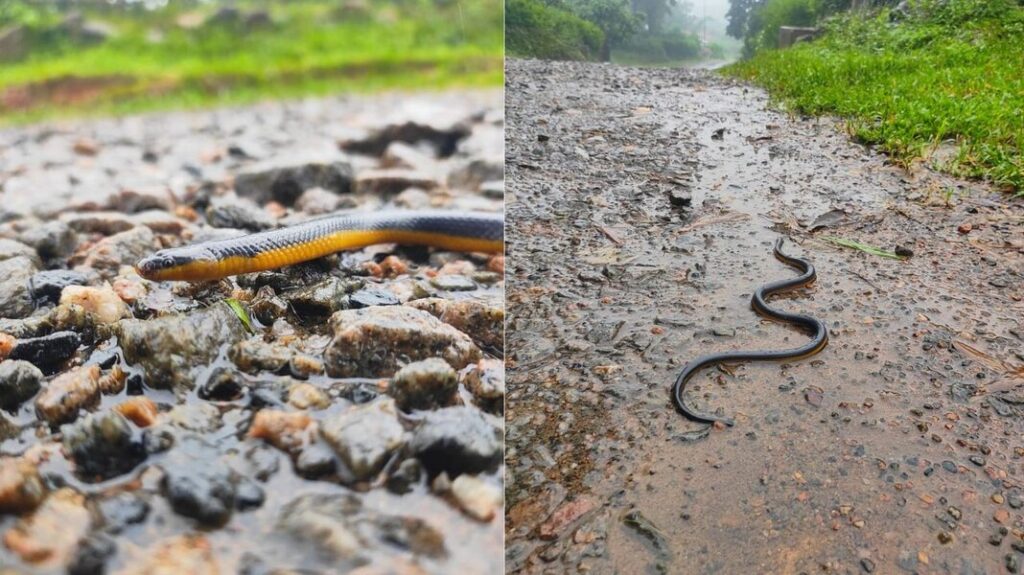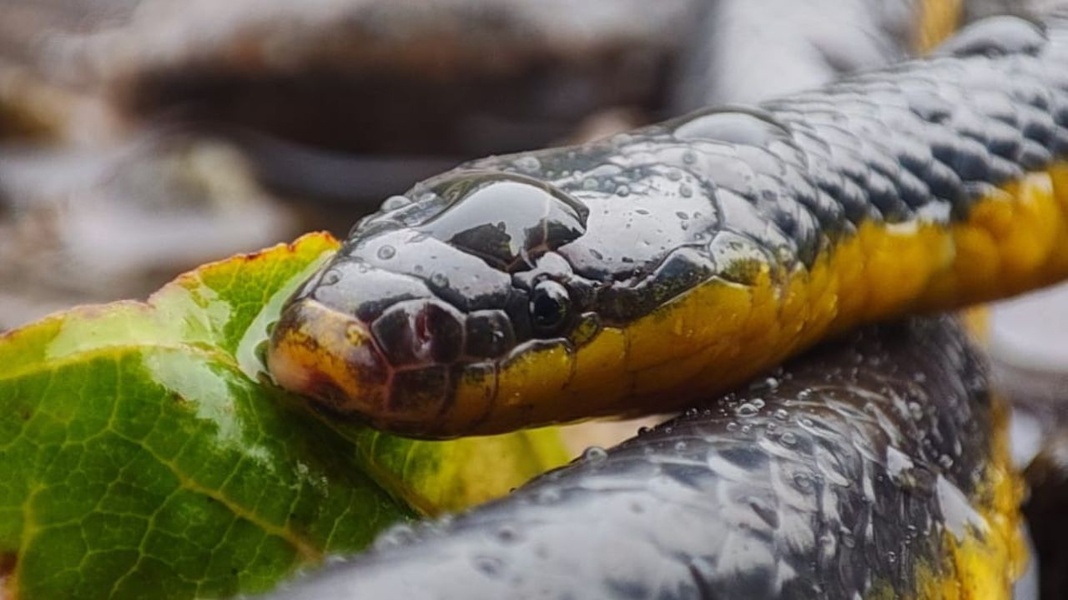Shillong, April 27: In the rain-soaked highlands of Meghalaya, scientists have made an exciting discovery about a little-known forest snake that has remained a mystery for nearly two centuries. The elusive Smithophis bicolor, first described in 1855, has now been confirmed as a distinct species living exclusively in the higher elevations of Meghalaya — thanks to a combination of field surveys, detailed morphological studies, and modern genetic analysis.
The study, published in the Journal of Threatened Taxa, was led by Jayaditya Purkayastha and his team from Help Earth NGO, along with researchers from Assam Don Bosco University, the Zoological Survey of India, and Mizoram University.

Despite being one of the earliest described species of the genus Smithophis, S. bicolor lacked any new information until recent times. “ “The study not only gives genetic data from the type locality of S. bicolor but also provides expanded morphological description of the species based on multiple specimens” researchers associsted with the study say.
The discovery began with a road-killed specimen collected by Holiness Warjri, a young researcher from Mairang, Eastern West Khasi Hills. This seemingly small find sparked a much larger investigation. The team collected and examined multiple specimens from across Meghalaya, analyzed their body features in detail, and for the first time, sequenced their mitochondrial DNA (specifically the cytochrome b gene).

Their findings were surprising: although Smithophis bicolor had previously been reported from both Meghalaya and Mizoram, the study revealed that the true bicolor is found only in Meghalaya. Specimens from Mizoram, earlier thought to be the same, represent an entirely different lineage — possibly a new, yet-unnamed species.
The true Smithophis bicolor is a striking snake with a shiny black back and a bright gamboge-yellow belly. In the wild, it lives near clear forest streams, boulders, and mossy slopes between 1,000 and 1,700 meters above sea level. It is active during the daytime, especially after heavy rainfall, and prefers semi-evergreen to evergreen forests — habitats that are becoming increasingly vulnerable to human disturbance.
The snake’s appearance — smooth-scaled, short-tailed, with a sleek bicolored body — sets it apart from its close relatives. Males are slightly different from females, with longer tails and more subcaudal scales, according to the detailed measurements recorded in the study.
“This is not just about finding a snake,” said the researchers. “It’s about understanding the hidden biodiversity of Meghalaya’s hills.” The study not only clarifies the true identity of Smithophis bicolor but also lays the groundwork for future discoveries — as the team suggests that the Mizoram specimens will soon be formally described as a new species.
The rediscovery also highlights the rich but fragile ecosystems of the Khasi Hills. With ongoing habitat loss, the researchers stress the need for urgent conservation measures to protect these mist-laden forests and their unique wildlife.

Researchers say Meghalaya, which is rich in terms of biodiversity forms a part of the Indo-Burma biodiversity hotspot which lies on the southern bank of river Brahmaputra and has been relatively well surveyed historically, particularly during the time of British India. Since then, after a long time the state has witnessed a significant increase in the number of new herpetofaunal species descriptions in the past two decades alongside range extensions regarding certain species.
“Despite being a described species, further research and field work are necessary to properly understand the accurate distribution range, ecology, reproductive biology and conservation biology of S. bicolor. The Khasi Hill is the “type locality” for snake species like Stoliczkia khasiensis Jerdon, 1870 which is known just from a single specimen and since its description in 1870, the species was never reported for the second time as a result of which it has been considered as a lost species.
“This highlights the importance of conducting continuous as well as comprehensive herpetofaunal surveys throughout Khasi Hills and its adjoining hill ranges before the depletion of forest cover due to anthropogenic pressures” researchers emphasize.
Also Read: A Rare Glimpse: First Ever Photograph of a Ferret Badger Captured in Tripura
Also Watch
Find latest news from every corner of Northeast India at hubnetwork.in, your online source for breaking news, video coverage.





